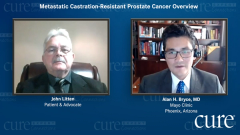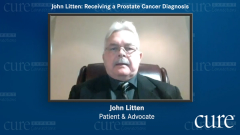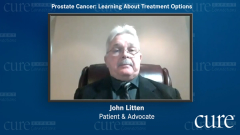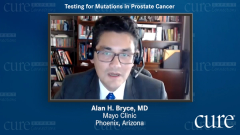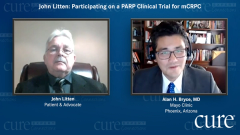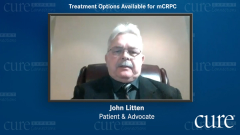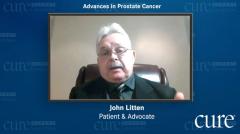
PARP Inhibitors in Recurrent mCRPC
Episodes in this series

Alan H. Bryce, M.D.: I’d like our viewers to be aware that there are now two PARP inhibitors approved. Six months ago there were none. Rucaparib was the first. There’s also olaparib. These two drugs are very similar. They’re both PARP inhibitors. They’re both pills. You take them both twice a day. The side-effect profile is fairly similar between them.
Because of some technical details of how clinical trials are designed and how the FDA approval process works, the approval labels on the two drugs are slightly different. They both target the same population. That is, men with castration-resistant prostate cancer whose tumors have specific mutations in these genes involved in the PARP pathway.
For my part, this was a long time coming. We have been doing this research for years when we started doing genetic research. We knew BRCA was a good target. We knew this target was in prostate cancer. We knew that in breast cancer and ovarian cancer they’d already shown that these drugs worked. So much of what had to happen was convincing everyone—regulators, the industry, and ultimately patient advocates and patients—that this concept had to be brought over to prostate cancer, that it wasn’t just a concept that worked in breast and ovarian cancer. Ultimately that happened. This is an international effort from researchers in Europe, in the United States, and throughout the world to make this happen.
What’s really exciting in prostate cancer is that the pipeline of ongoing research of other drugs of other concepts and other modes of attack is brimming. There is a full pipeline of new concepts, some of them trying PARP inhibitors in other ways, moving them earlier in the disease course. There are two other PARP inhibitors being tested, some concepts that are completely different—the radiotheranostics and lutetium.
My goal as a medical oncologist is to put myself out of business. We want to cure prostate cancer so that no one has to deal with this again or ever go through this again. The great thing is that in prostate cancer, the pace of change right now is gangbusters. We’re seeing a couple of new approvals every year. The thrill, the happiness of every drug approval, never wears off. We are moving this field forward.
When you started on rucaparib, John, why did I recommend it for you? Obviously, it’s because it matched your genetics. I had a high degree of confidence that it was going to work.
Based on our conversation, what did you feel about the likelihood that this was a good move for you? As you go into a study, knowing that you’re an early adopter—that because it’s a study, by definition we don’t know exactly what’s going to happen—how do you think about defining success? And what was most important to you in that decision-making process?
John Litten: As the patient, not the doctor, not fully understanding the mechanics of this type of treatment, I relied on my discussions with you, but the people should know that when you’re volunteering into one of these researcher trials or studies, you’re coming in on a fairly regular basis for blood tests—extensive blood tests—bone scans, and CT scans on a three-month basis, much more frequent than would be normal for a patient with this type of cancer.
My concern was that with the earlier chemotherapies and pill forms of drugs, I was always watching. I couldn’t wait to see what my PSA [prostate-specific antigen] level was. Is it still low? It was almost at a point that it’s not negligible. You almost can’t even discern that it’s there, but with the other modalities, yes, it would start to rise back up. The conclusion would be, “Well, I think the cancers found an immunity to the drug.” This was a totally new concept. I wasn’t sure how I could identify whether I thought it was a good thing, a bad thing, how it was working for me. I relied on waiting to see what my blood tests were and what my scans were.
In a matter of three months of being on this PARP inhibitor, the increased size of my abdominal lymph glands shrunk down to normal size. The cancer was no longer visible in any of the soft tissue areas of my body where they were before. That to me was total success. I could tell that this treatment was working well for me.
The beauty of it all was far fewer side effects of taking this type of treatment than all the others prior to this. No loss of hair, no nausea, no general fatigue, no mood swings, no other things that would come and go with the other treatments. They were gone. I can tell you that I’ve been a full year now with virtually no symptoms and taking a drug that has totally kept my cancer at bay.
I am so encouraged by it. I want to encourage everybody out there to investigate it if in your process of where you are with your cancer, you’re ready for this type of treatment. Because there are some things that you must do prior to getting into a PARP inhibitor type of medication.
Alan H. Bryce, M.D.: That’s right. The FDA label talks about prior therapies as well. Indeed.
Transcript Edited for Clarity







